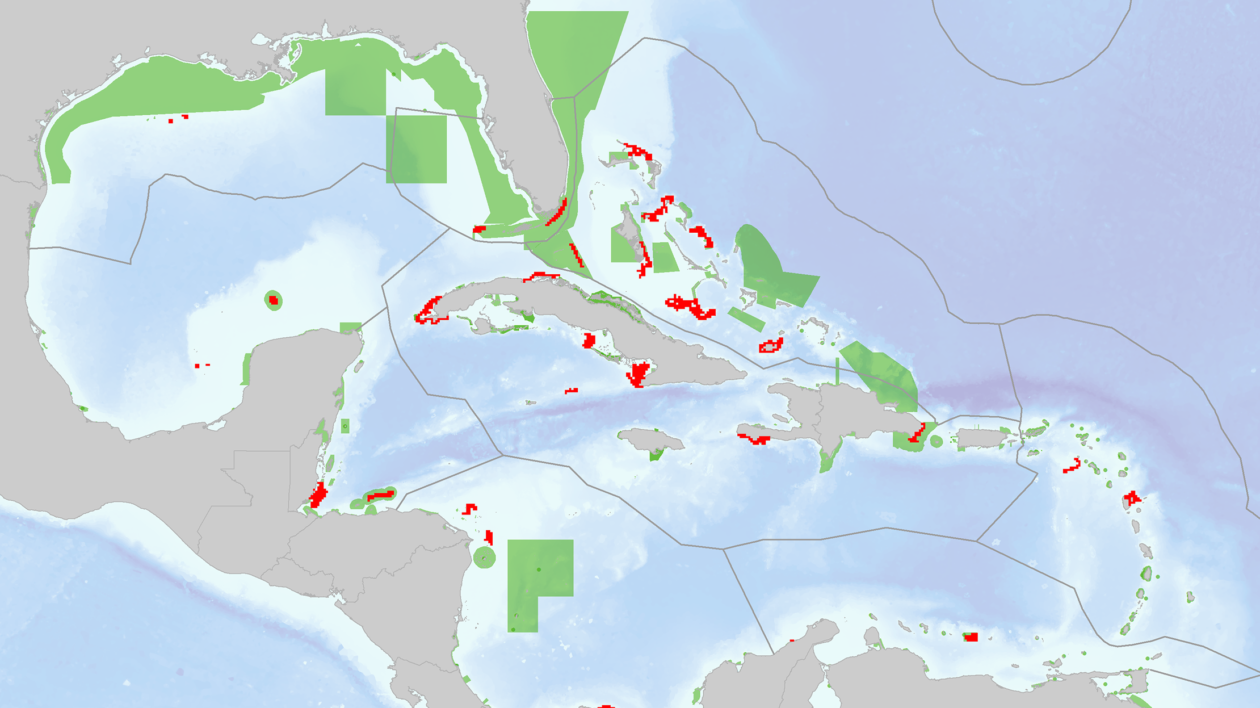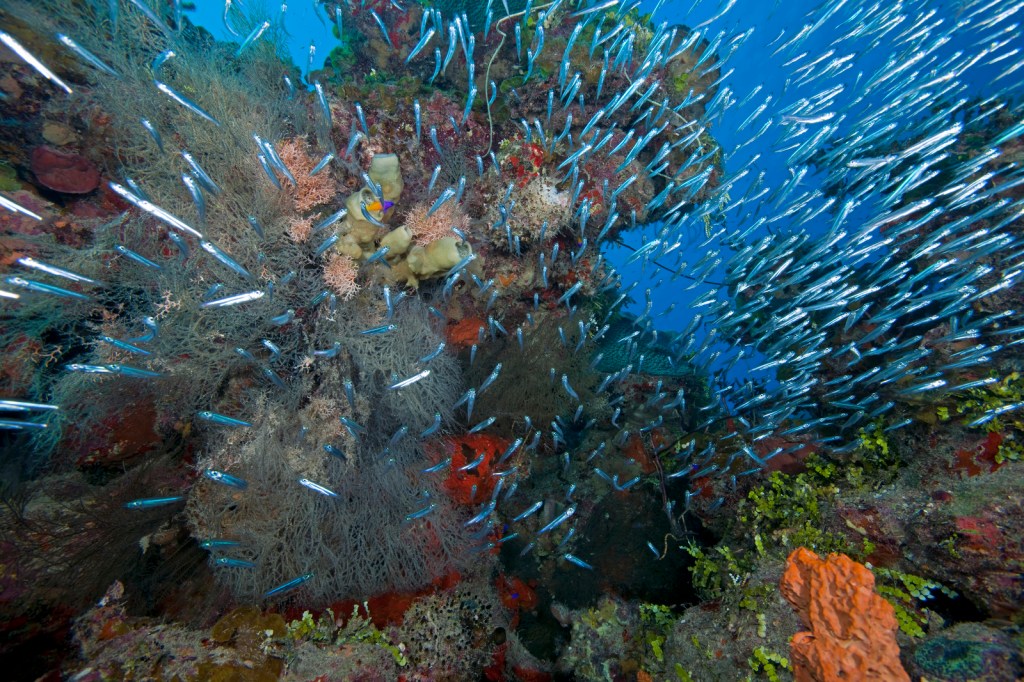Incorporating coral reef connectivity into marine protected area design is critical for the long-term survival of coral reefs. But in the Caribbean, the current network of protected areas leaves out 77 percent of coral reefs with high connectivity value, according to new study published in PLOS One.
Coral Spawning & Gene Flow
Many coral species reproduce by releasing millions of eggs and sperm into the water, where they combine to form larvae. Multiple coral species spawn together, usually once a year, synchronizing their release using the lunar cycle and tides.
A large majority of these larvae settle back onto their parent reef, but some of them travel on ocean currents to elsewhere in the Caribbean and populate other reefs. “They might be able to travel for 10 kilometers, or even up to 100 kilometers if the conditions are right,” says Eric Treml, a marine biologist at the University of Melbourne and co-author on the research.
These mobile larvae help bolster genetic diversity, transferring advantageous genes across the region, and help populate reefs with low local recruitment. “Gene flow is an important factor in a population’s adaptive potential,” says Treml, “or how well they might be able to handle future climate change or temperature disturbances.”
Adding Connectivity to the MPA Equation
Coral spawning and reef connectivity is critically important to long-term reef health, but it’s also incredibly tricky to integrate into conservation planning. To help tackle this challenge, researchers from The Nature Conservancy and their colleagues designed a method to model larvae dispersal and determine which reefs are most important to maintaining connectivity.
First, they used National Oceanic and Atmospheric Administration (NOAA) ocean current data in the 30 days following eight historic spawning events from 2008 to 2011 to analyze how coral larva disperse throughout the Caribbean. “NOAA uses satellites to measure the height of the ocean, and based on changes in ocean height they can predict the direction and velocity of the ocean surface currents,” explains Steve Schill, a senior scientist with the Conservancy’s Caribbean program.
Schill and his colleagues then input the results of those simulations into Marxan, spatial conservation planning software, which identified the reefs with the highest connectivity value.
“We targeted two different types of connectivity,” says Treml. “One is the reproductive output, or the amount of larvae that an individual reef’s complex contributes to its neighbors and acts as a source site. The other type of connectivity is what we call betweenness, which means to what degree a particular reef habitat serves as a stepping stone between other reef patches.”
Finally, Schill and Treml compared reefs with high connectivity value to the current network of marine protected areas in the Caribbean, mapping the results by both exclusive economic zone and marine ecoregion. That comparison allowed them to identify how countries are dependent on each other in terms of larvae sources and sinks.

They discovered that 77 percent of coral reefs with high connectivity value are not included in the existing network of marine protected areas (MPAs).
The Marxan modeling shows that the Mesoamerican reef, the Bahamas, and Cuba are all key to maintain coral reef connectivity in the Gulf, acting as corridors across the region. In addition to identifying reefs that are key to maintaining connectivity, the results also identify reefs that are vulnerable to isolation — including small island reefs in the eastern Caribbean — because they rely heavily on larvae from nearby reefs to persist.
A Regional Perspective for MPA Planning
“Connectivity has always been one of the most challenging things to measure,” says Schill. He and Treml explain that the current mismatch between existing protected areas and high-connectivity reefs is the result of a lack of connectivity data and a history of developing MPAs with local objectives as opportunities arose.
Schill says that these results will help inform the strategic expansion of MPAs as Caribbean countries seek to meet their goals under the Caribbean Challenge, an initiative to protect 20 percent of the marine and coastal habitats of Caribbean countries by 2020. He and Treml also hope that other scientists can use their methodology to incorporate reef connectivity into conservation planning elsewhere, including the Coral Triangle, the tropical Pacific, and Australia’s Great Barrier Reef.
“Now we have the data and the capacity to step back and reevaluate the placement of MPAs throughout the whole region,” says Schill, “and our research highlights some key conservation opportunities.”




Join the Discussion